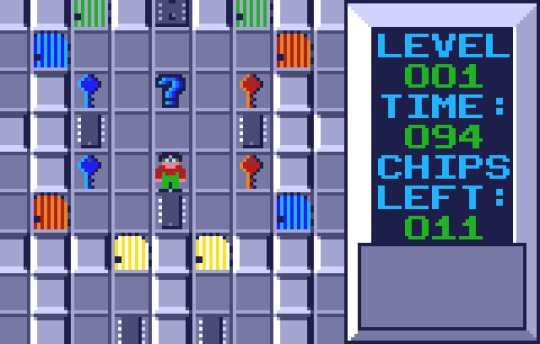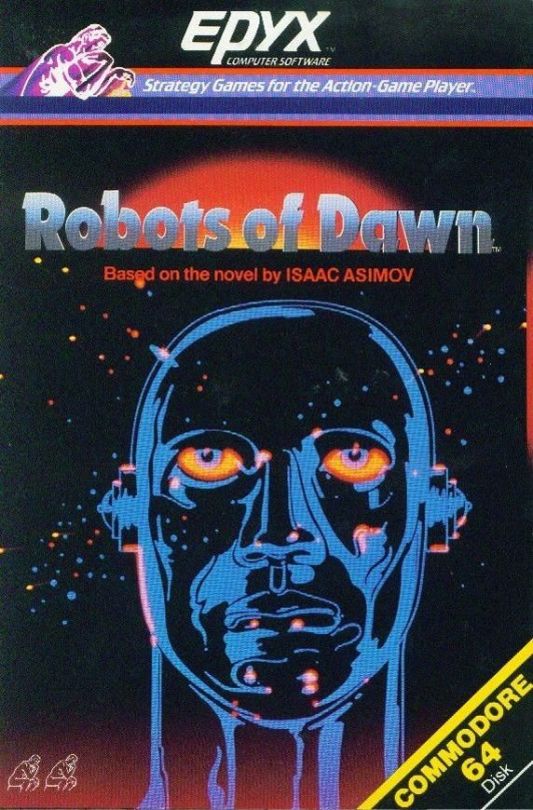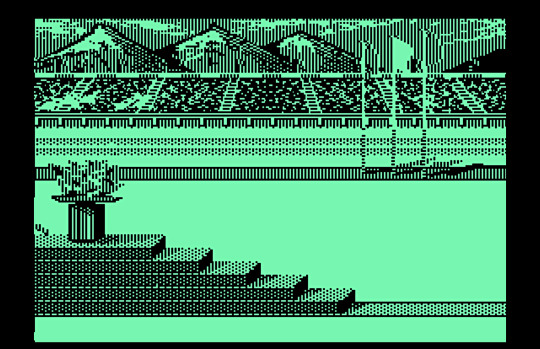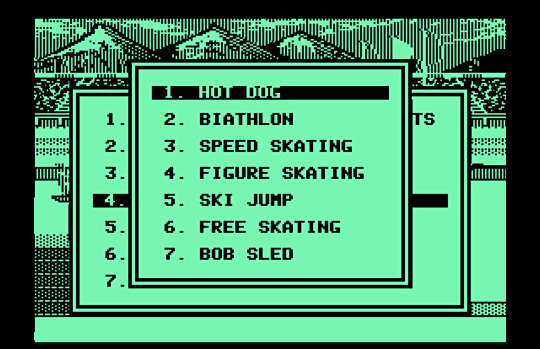#EPYX
Text

Chip's Challenge (Lynx, 1989)
322 notes
·
View notes
Text

Beware the minions of the Insect God! This week on the Vintage RPG Podcast, we’re looking back through videogame history at The Temple of Apshai Trilogy (1985), the classic remake of the original 1979 game and its two expansions. Apshai is maybe (depending on the criteria) the first dungeoncrawler videogame and one of the earliest videogame interpretations of Dungeons & Dragons. The Trilogy also has a rad instruction manual full of great art that, all these years later, is still worth the price of admission on its own.
#roleplaying game#tabletop rpg#dungeons & dragons#rpg#d&d#ttrpg#podcast#Apshai#Temple Of Apshai#Epyx#DunjonQuest#videogame
62 notes
·
View notes
Text

UK 1987
#UK1987#US GOLD#EPYX#ACTION#SPORTS#C64#AMIGA#ATARIst#SPECTRUM#AMSTRAD#MSX#IBM#NES#ATARI VCS#SEGA MASTER SYSTEM#SEGA GENESIS#ATARI LYNX#APPLE#CALIFORNIA GAMES
28 notes
·
View notes
Photo

Electrocop (Epyx - Lynx - 1989)
433 notes
·
View notes
Text

Epyx's "California Games" for the Atari VCS 2600 / 7800
#Epyx#California Games#Atari#Atari VCS#Atari VCS 2600#Atari 2600#Atari 7800#Retro#Game#Retro game#Retro gaming#Pixel Crisis
21 notes
·
View notes
Photo

Impossible Mission - Commodore 64 disk box (Epyx). What a fantastic game this was, and it was the tenth best-selling home video game of 1985 in the UK.
Top 10 Home Video Games from 1985
51 notes
·
View notes
Photo

1984
292 notes
·
View notes
Text
Winter Games for Apple //e
This was one of the few games I had for our Apple //e growing up. Even as a kid I knew it wasn't a great game, but I still loved it and played it all the time. Winter Games and NES Ice Hockey always got me in an Olympics mindset.
We didn't have a color monitor—it was years later that I found out the Apple // could do color—so I only played it in green.


Let the games begin!

I spent a lot of time playing the Hot Dog mini game.

All those great flags in green...

I never saw this until I was an adult, using an emulator.
3 notes
·
View notes
Photo

12 notes
·
View notes
Text
The Free Cheese Episode 499: Rogue
This week on The Free Cheese, welcome to Berlin!
We roll the clocks back to 1980 and play Rogue, adding it to our list in the process. Naturally, we discuss the game’s influence and try to break down our understanding of the many different definitions of what it is to be a roguelike.
Reviews
Joe
It feels odd to write a review for Rogue. How do you review chess? How do you review playing…

View On WordPress
0 notes
Text

Gates of Zendocon (1989)
189 notes
·
View notes
Photo


This is the Epyx edition of Rogue (1985), which is the first commercial port of a game that had been, in various forms, freely distributed previously. It’s so massively influential, there is a sub-genre — roguelikes — named after it. Its a dungeon-crawler distinguished by key features. First, every time you enter the dungeon complex, which is illustrated on screen symbolically, through ASCII floor plans, the layout, encounters and treasures are all procedurally generated, meaning every exploration is unique. Second, character death is permanent, heightening the stakes of every decision (you can’t even easily savescum, as loading a save also erases it).
Funny thing: I’ve never played Rogue! There was a time when I was an avid player of NetHack, a version of Hack (1982), which is a clear mimic of Rogue, but I never played the originator. I have, however, long been fascinated by this cover, which features neon wireframes similar to many other Epyx box art. I find this to be a Tron-like distillation of the computer game scene of the period, and this pleases me.
195 notes
·
View notes
Text

UK 1987
#UK1987#US GOLD#EPYX#ACTION#SPORTS#C64#APPLE#IBM#SPECTRUM#AMSTRAD#MSX#AMIGA#ATARIst#NES#SEGA GENESIS#ATARI VCS#SEGA MASTER SYSTEM#ATARI LYNX#CALIFORNIA GAMES
40 notes
·
View notes
Video
youtube
🎮 California Games (Mega Drive)
Complete Gameplay: https://youtu.be/7FM6J99We1Q
#Viciogame #CaliforniaGames #MegaDrive #Gameplay #株式会社セガ #Epyx #JogosDeVerao #Walkthrough #Sports #WorldGames #Playthrough #Sega #Novotrade #Longplay #TecToy #Esportes #LetsPlay #メガドライブ #SegaGenesis #SummerGames
#viciogame#california games#mega drive#gameplay#epyx#jogos de verão#walkthrough#sports#world games#playthrough#sega#novatrade#nova trade#longplay#tectoy#tec toy#esportes#let's play#skate#sega genesis#summer games#bicicleta#bike#bikes#patins#roller#surfe#surf#メガドライブ#株式会社セガ
1 note
·
View note
Text

Revisiting Epyx's 'Hellfire Warrior,' a dungeon crawler for the Atari 800, plunges players into the depths of a perilous dungeon filled with demons and other hellish creatures. This setting, evocative of the theological concept of Hell, offers an intriguing canvas for a theological exploration of themes such as sin, redemption, the nature of evil, and eschatological struggle. By incorporating the insights of St. Augustine, Thomas Aquinas, Dante Alighieri, and Rudolf Otto, this analysis will explore the dark and complex theological implications woven throughout the game's narrative and mechanics.
St. Augustine's writings on the nature of evil provide a foundational perspective for interpreting the demonic forces encountered in 'Hellfire Warrior.' According to Augustine, evil is not a substance but a corruption of good, a privation rather than a positive entity. In the game, the various demons and monsters can be seen as manifestations of such metaphysical corruption, distorting whatever good might have originally existed in the game’s universe. Augustine's notion of evil elucidates the player's role as a force of divine retribution or correction, tasked with purging these corruptions and restoring a semblance of the Good.
Building on Augustine’s interpretation of evil, Thomas Aquinas’s insights into virtue ethics further illuminate the player’s moral journey. Thomas Aquinas’s thoughts on virtue and the moral challenges faced by human beings are relevant in analyzing the player's journey through the dungeon. Aquinas believed that human actions should aim towards the ultimate good, facilitated by the practice of cardinal virtues: prudence, justice, temperance, and fortitude. Each level of the dungeon, with its unique set of demonic adversaries and puzzles, represents a test of these virtues, challenging the player to develop and exhibit these qualities as part of their quest.
The ethical dilemmas faced in each dungeon level evoke the allegorical interpretations found in Dante Alighieri's 'Divine Comedy,' particularly 'The Inferno.' Dante Alighieri's parallels the descent into the dungeons in 'Hellfire Warrior.' Each level of the dungeon can be thought of as one of Dante’s circles of Hell, with various sins and their corresponding punishments represented by the different types of demons and traps encountered. This allegorical journey through Hell serves as both a literal battle against evil and a metaphorical pilgrimage towards self-understanding and purification.
From Dante’s vivid depiction of Hell, we transition to Rudolf Otto’s analysis of the numinous experience, which describes an encounter with the "wholly other" that is at once terrifying and fascinating, can be applied to the player’s encounters with the supernatural entities within the game. The numinous experience, characterized by mysterium tremendum (fearful mystery) and mysterium fascinans (compelling attraction), captures the ambivalent emotion players feel when facing the game’s more powerful demons, which are both frightening and intriguing. This encounter underscores the game’s ability to evoke a complex emotional and spiritual response, highlighting the profound impact of confronting 'the holy.'
In conclusion, 'Hellfire Warrior' is not merely an early example of a dungeon crawler; it is a complex tapestry rich with theological symbolism and profound questions about the nature of evil, the struggle for virtue, and the human encounter with the numinous. The game, through its challenging gameplay and evocative setting, invites players to consider deeper existential and theological themes, making it a unique artifact in the realm of video gaming and a subject of interest for theological inquiry.
2 notes
·
View notes
